You’ve just slipped into the most divine 1950s wiggle dress cherry red with a nipped waist that makes you feel like a secretary in a Hitchcock film. The mirror reflects pure vintage perfection: the curve of the hip, the gentle sweep at the knee, that hourglass silhouette that makes modern fashion look positively shapeless. But then reality hits. What on earth do you wear underneath? What did women wear in the 1950s?
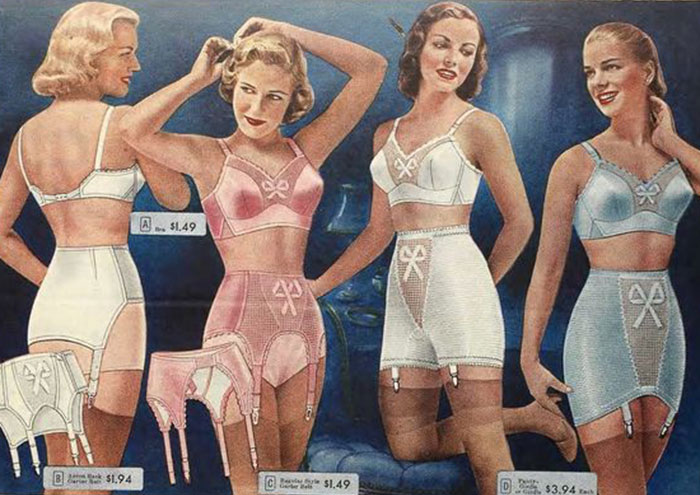
The dress demands structure, smoothness, a certain je ne sais quoi that your everyday underwear simply can’t provide. Yet the thought of squeezing into a vintage girdle makes you want to reach for your softest pyjamas instead. If squeezing into a vintage girdle under your vintage dress terrifies you., let’s at modern comfort shapewear alternatives
This is the eternal dilemma for vintage dress lovers: we want the silhouette without the suffering, the glamour without the girdle, the smooth lines without feeling like we’re wrapped in rubber bands. Our grandmothers may have accepted that beauty meant barely breathing, but we’ve evolved past the idea that looking fabulous requires physical torture.
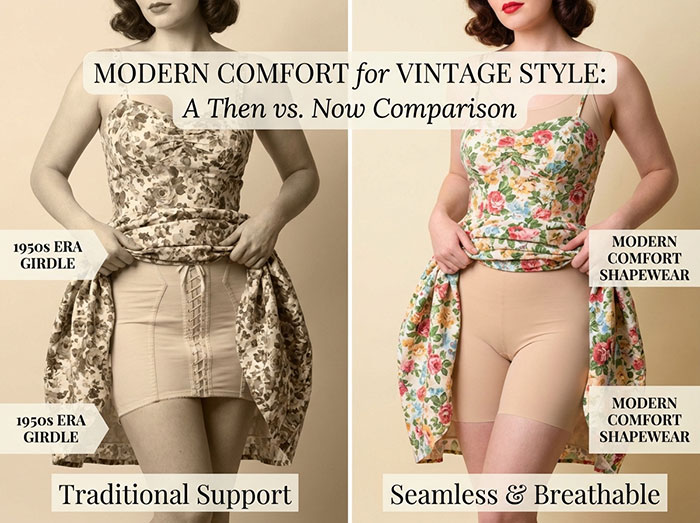
The good news? Modern shapewear for vintage dresses has finally caught up with our vintage dreams. Today’s options honor those classic silhouettes the nipped waists, smooth hips, and graceful lines—while letting you sit through dinner, dance to swing music, and climb stairs without seeing stars. This guide will show you exactly how to achieve authentic vintage shapes using shapewear that treats your body like a friend, not an enemy.
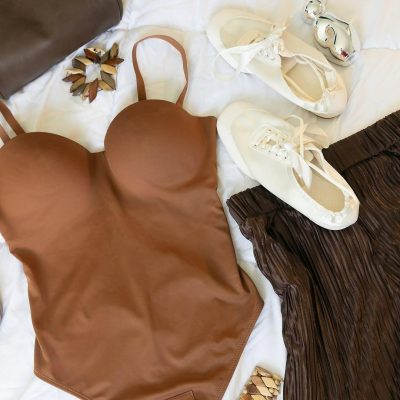
What Real Vintage Underwear Was Actually Like
Before we celebrate our modern options, let’s acknowledge what women actually wore under those gorgeous vintage dresses and why we should be grateful for progress.

In the Edwardian era, women contorted themselves into S-bend corsets that thrust the bust forward and the hips back, creating a posture that looked elegant in portraits but caused actual spinal problems. These corsets were laced so tightly that fainting couches weren’t just decorative they were necessary furniture.
The 1930s and 1940s brought some relief with the introduction of elastic, but “relief” is relative. Women wore all-in-one girdles that started at the ribs and ended mid-thigh, longline bras with enough boning to build a small fence, and garter belts that required the dexterity of a circus performer to fasten. Getting dressed was a 20-minute production still involving hooks, eyes and zippers eyes. Occasionally, assistance from patient husbands or roommates.
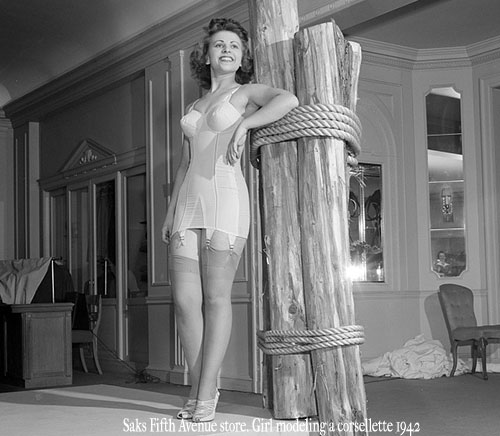
In the 1940s, bullet bras created those distinctive cone-shaped busts (achieved through circular stitching so rigid it could practically stand alone). Waist cinchers removed inches through sheer compression. Open or panty girdles smoothed from waist to thigh with all the flexibility of cardboard. Women literally planned their eating and drinking around their underwear, knowing that once dressed, certain bodily functions became logistical nightmares.
The heat alone was unbearable. Multiple layers of thick elastic, satin, and rubber-lined fabrics created a personal sauna that no amount of powder could combat. Dancing meant perspiration pooling in unfortunate places. Sitting required strategic positioning to avoid permanent red marks. And heaven help you if you needed to use the powder room quickly.
The Vintage Silhouettes Everyone Loves (Without the Original Squeeze)
The Nipped-Waist Fit-and-Flare ’50s Dress
This is the holy grail of vintage silhouettes: tiny waist, full bust, circle skirt that swings when you walk. Originally, this look required a bullet bra for that distinctive pointed bust, a waist cincher to create dramatic definition, and often a crinoline petticoat for skirt volume.
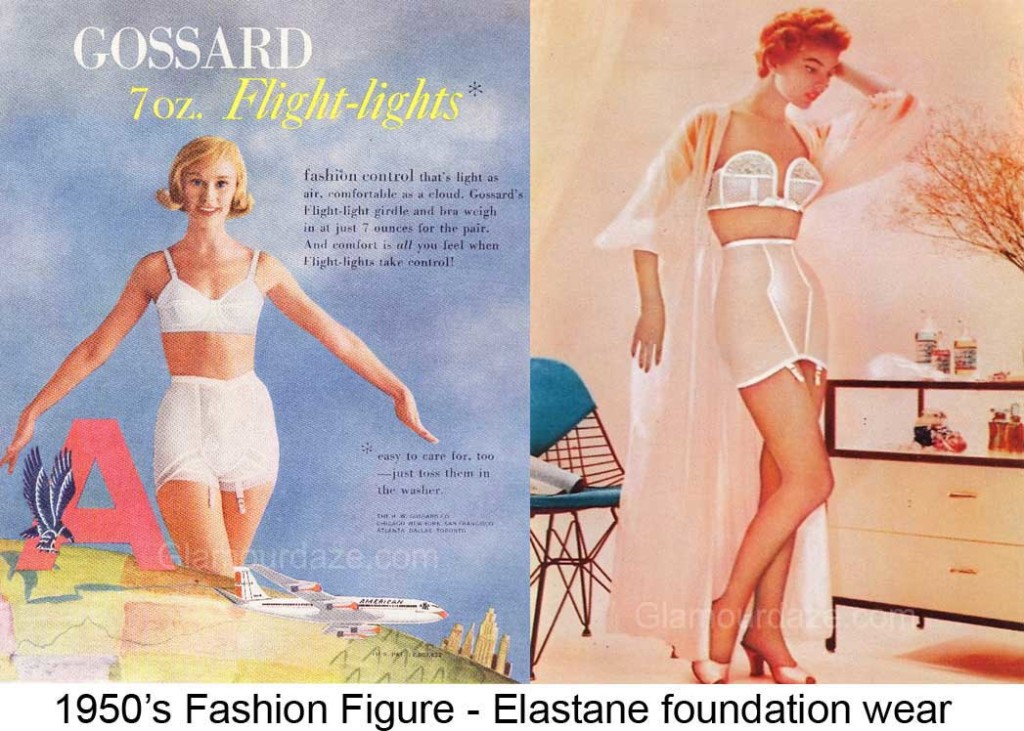
Today’s goal in shapewear for vintage dresses is softer but still defined. You want gentle waist shaping that creates an hourglass without preventing you from enjoying wedding cake. You need bust support that creates a smooth line without turning your chest into twin pyramids. The magic is in suggestion rather than extreme transformation.
The Slinky Wiggle Dress
The wiggle dress is all about controlled curves smooth from bust to knee with special emphasis on hips and rear. Vintage versions relied on serious girdles that flattened the stomach while somehow enhancing the hips, plus stockings with seams that had to be perfectly straight (a daily battle involving hand mirrors and patience).
Modern translation: smooth everything without creating a sausage-casing effect. You want to eliminate visible panty lines and smooth any lumps or bumps while still being able to walk naturally. The wiggle should come from the dress’s cut, not from your shapewear literally preventing normal leg movement.
The Old Hollywood Slip/Bias-Cut Gown
These liquid silk gowns that pooled around Jean Harlow and Greta Garbo required foundations as smooth as the fabric itself. Any bump, seam, or line would telegraph through the bias-cut fabric. Women wore specially designed bias-cut slips, sometimes with built-in bras, sometimes worn over other foundation garments.
The contemporary approach focuses on invisible support. You need something that smooths from bust to hip without creating any edges or transitions that might show through. Think of it as creating a smooth canvas for the dress to glide over, not reshaping your entire torso.
1940s era Tea Dresses & Daywear
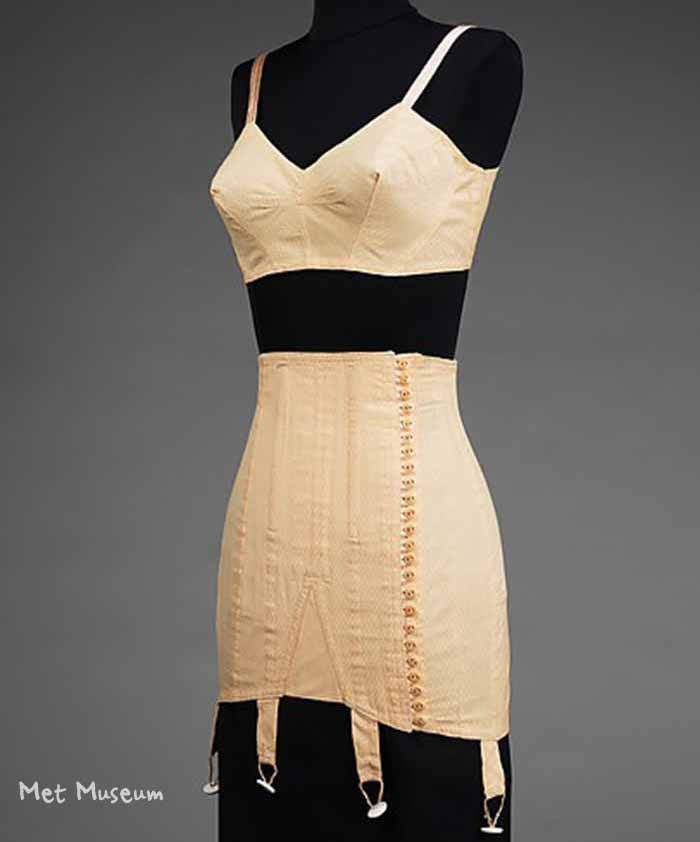
These lighter, more casual vintage styles still benefited from some structure, particularly when made from the thin cottons and rayons popular in the 1940s. Women wore lighter girdles or control briefs, often with separate bras that provided shape without the extreme architecture of evening foundations.
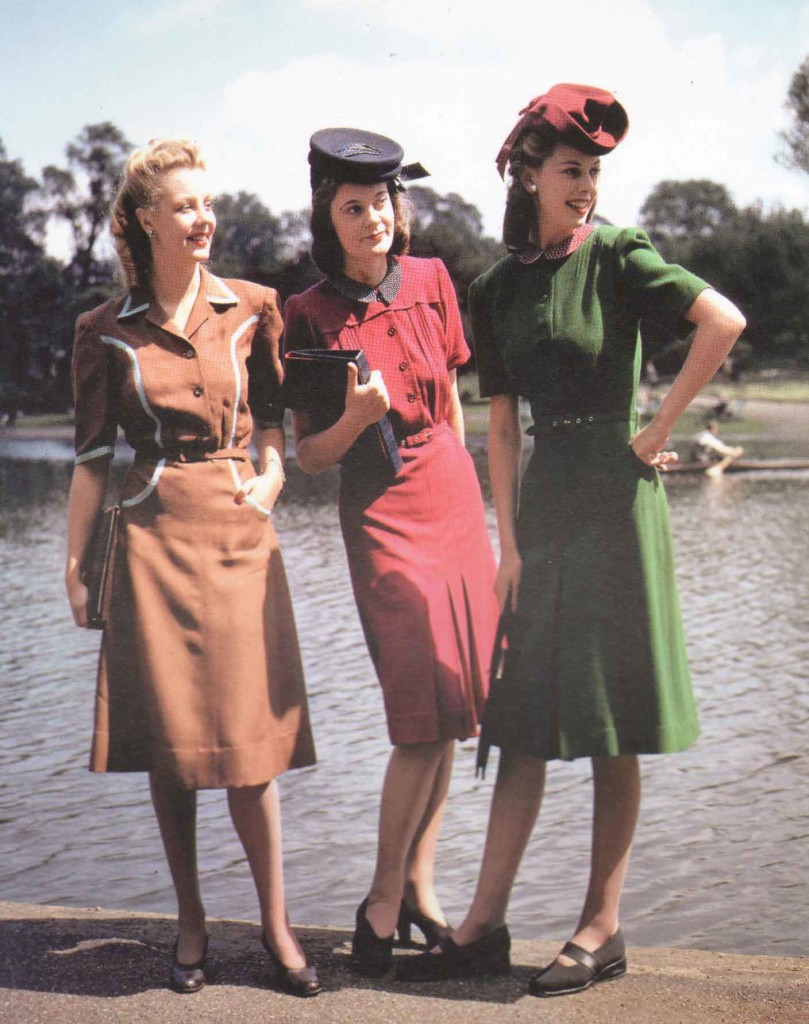
Today, these dresses need just enough smoothing to prevent show-through while maintaining the easy, wearable nature that makes vintage daywear so appealing. Light control that prevents visible underwear lines while letting you actually enjoy your afternoon tea.
Modern Shapewear That Works with Vintage Dresses
Sculpting Bodysuits
These are the workhorses of vintage-appropriate shapewear. A good bodysuit creates smooth lines from bust to hip, eliminating the dreaded waist gap that can plague fit-and-flare dresses. They work beautifully under slip dresses where any transition between bra and bottom shapewear would show.
The key is finding bodysuits with necklines that complement your vintage pieces. A square neckline works with 1940s day dresses, while a sweetheart cut suits 1950s evening wear. Look for adjustable straps that can accommodate halter conversions or be removed entirely for strapless looks.
High-Waisted Shorts
Perfect for wiggle dresses and pencil skirts, high-waisted shapewear shorts smooth the tummy and hips while preventing thigh chafing a real concern when wearing vintage stockings or going bare-legged. They eliminate visible panty lines that can destroy the smooth silhouette these dresses require.
Length matters enormously. Too short and they’ll roll up; too long and they’ll peek out when you sit. Mid-thigh is usually ideal, though always test with your actual dress. Sit, stand, and walk around before committing to a length.
Slips & Half-Slips Over Shapewear
Here’s where vintage authenticity meets modern comfort. Wearing a proper slip over your shapewear adds that authentic swish under full skirts while hiding any texture from the shapewear itself. A good slip also prevents static cling and adds an extra layer of smoothing without compression.
Comfort-focused brands such as HEYSHAPE design bodysuits and shorts with soft compression, wide straps and seamless finishes, so they sit quietly under vintage-style dresses instead of fighting them. The focus has shifted from maximum squeeze to all-day wearability.
Soft Bras & Wireless Lift
Not everyone wants or needs a full bodysuit. Modern soft-cup bras can create beautiful vintage-appropriate shapes without underwire digging into your ribs all night. Look for styles with side support panels that create a lifted, separated look reminiscent of vintage styling but with contemporary comfort.

How to Choose Shapewear That Feels Glam, Not Torture
Fabric & Feel
Your shapewear should feel like a firm hug from a friend, not a python attack. Look for fabrics with genuine breathability words like modal, bamboo, or moisture-wicking aren’t just marketing speak. They mean the difference between staying fresh through a swing dance or feeling like you’re wrapped in plastic wrap. Run your hand over the fabric; if it feels scratchy or plasticky in the store, it’ll feel worse after three hours of wear.
The Fit Test
Before you commit to wearing any shapewear to an actual event, conduct the real-world test. Can you sit in a chair without feeling bisected at the waist? Can you climb a flight of stairs without getting winded? Can you raise your arms for a victory pose without something rolling down? If you’re already uncomfortable standing in your bedroom, you’ll be miserable by dessert course.
Length & Cut Considerations
This is where many vintage dress lovers stumble. That perfect shapewear short that smooths everything might have legs that extend exactly to where your wiggle dress hits your thigh, creating an unfortunate ridge. Always try shapewear with the actual dress you plan to wear. Check sitting positions—many a vintage enthusiast has discovered their shapewear peeks out when seated only after arriving at the event.
Color Matching
“Nude” is not universal. Finding shapewear that actually matches your skin tone makes an enormous difference, especially under lighter vintage fabrics. Don’t default to beige if you’re darker or lighter—seek out brands that offer genuine shade ranges. Black works beautifully under dark colors and prints but can shadow through lighter fabrics.
Expectation Reset
Let’s be clear: shapewear smooths and supports. It doesn’t permanently alter your skeleton or redistribute your organs. If you’re trying to achieve a 22-inch waist from a 30-inch natural measurement, you’re shopping for disappointment and possibly medical problems. Aim for smoothing, not metamorphosis.
Vintage-Inspired Styling Tricks That Make a Big Difference
The secret to authentic vintage style isn’t maximum compression—it’s understanding how women actually moved and styled themselves in these eras. A lightweight slip worn over your shapewear under a full 1950s skirt creates that distinctive swish and prevents the skirt from clinging to your shapewear. It’s a small detail that makes an enormous difference in how the dress moves and how you feel wearing it.
If you’re committed to the full vintage experience with stockings, modern shapewear shorts can actually make this easier. Choose shorts that end just above where your stockings begin, creating a smooth transition. Some vintage enthusiasts even wear their garter belt over their shapewear shorts—historically inaccurate but practically brilliant.
Neckline coordination deserves special attention. That gorgeous sweetheart neckline dress needs shapewear that won’t peek out when you lean forward. Halter dresses require convertible straps or strapless options. Boat necks can handle wider straps but watch for shoulder visibility. Off-shoulder styles demand strapless shapewear that won’t migrate south as the night progresses.
Remember that confidence creates more vintage authenticity than any foundation garment. The way you carry yourself—shoulders back, graceful movements, genuine smile—sells the look far more than an extra inch of waist reduction ever could. Women in the 1950s weren’t all size 2; they just knew how to work with what they had.
Where Comfort-First Shapewear Fits In Today

The shapewear revolution isn’t just about better fabrics and construction—it’s about a fundamental shift in philosophy. Modern brands understand that women want to wear their vintage dresses to actual events where they’ll be sitting, eating, dancing, and living, not just posing for photos.
These new companies prioritize all-day wearability. They test their products on real bodies doing real activities. They understand that a wedding lasts eight hours, not eight minutes. They know that vintage style lovers want to honor the aesthetic without recreating the discomfort our grandmothers accepted as normal.
A newer generation of labels treats shapewear less like secret armor and more like a soft foundation you can live in. Think smooth bodysuits and shorts with gentle shaping, wide straps and fabrics that feel closer to loungewear than old-school corsetry. You can explore one such comfort-focused brand here.
The shift also reflects changing attitudes about bodies and beauty. We’re not trying to fundamentally alter our shapes anymore; we’re just smoothing the canvas for these beautiful vintage silhouettes. It’s enhancement, not transformation, support rather than suppression.
Embracing Vintage Glamour on Your Terms
Picture yourself now: back in that cherry red wiggle dress, but this time properly supported by shapewear that moves with you. You glide down the stairs without holding your breath. You sit for dinner without calculating how much you can eat. You dance without worrying about rolling, pinching, or sudden elastic failure. When someone compliments your dress, you smile genuinely instead of through gritted teeth, counting the minutes until you can change.
This is the promise of modern shapewear for vintage lovers: all the glamour, none of the suffering. You can achieve those smooth lines, that nipped waist, that graceful silhouette without sacrificing your ability to enjoy the event you dressed up for. Your vintage style becomes something you live in, not endure.
The magic of vintage style was never just in the boning and elastic it was in how women moved, laughed and lived in their clothes. The right underpinnings should help you do the same: stand a little taller, breathe a little easier, and enjoy every minute in the dress you love. After all, what’s the point of looking like a 1950s goddess if you can’t have a goddess’s good time?
That’s all ! © Glamourdaze
